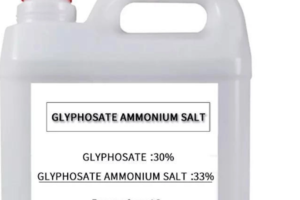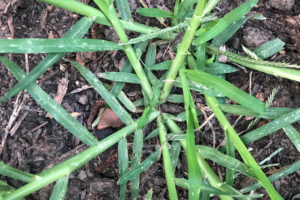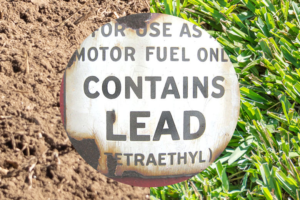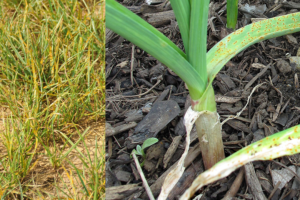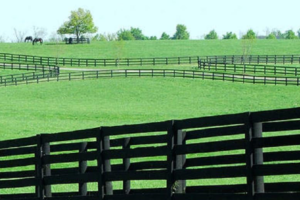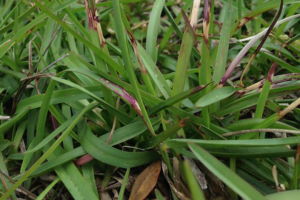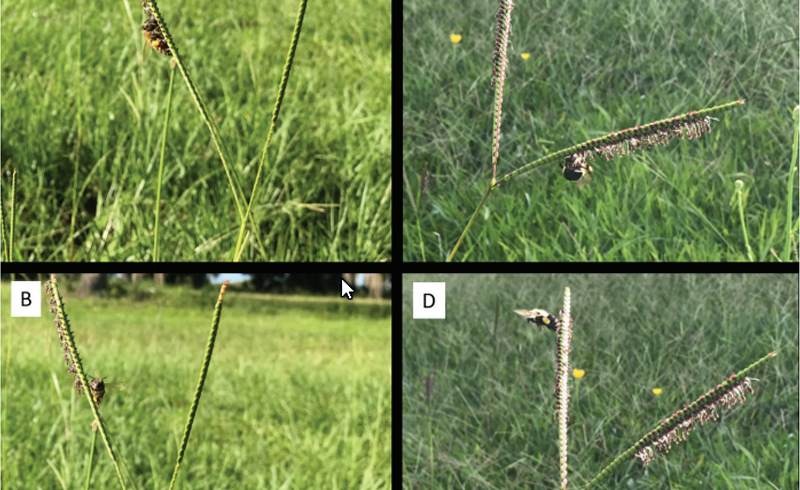
Introduction
Bahiagrass: More Than Meets the Eye
Bahiagrass, a common sight in many gardens and landscapes, is often chosen for its resilience and adaptability. It thrives in various conditions, making it a favorite among gardeners and landscapers. But beyond its aesthetic appeal and hardiness, bahiagrass holds a secret many might not know. It plays a pivotal role in supporting our buzzing friends – the bees.
The Bee-Bahiagrass Connection
Bees, essential pollinators in our ecosystem, always look for nectar and pollen sources. While flowers are their primary go-to, a recent discovery has shown that bahiagrass spikelets are also on their menu. This unexpected relationship between bahiagrass and bees highlights the grass’s ecological importance and offers gardeners and landscapers a new perspective on its potential benefits. In this post, we’ll delve into this fascinating relationship, shedding light on how bahiagrass can be a boon for bees and, by extension, our gardens and landscapes.
The Versatility of Bahiagrass
A Grass for All Seasons
Bahiagrass is a gardener’s dream, especially for those in challenging weather conditions. This grass variety is known for its remarkable ability to withstand drought, poor soil quality, and pests. Its deep-rooted system allows it to access water from deeper soil layers, ensuring it stays green even when other plants might wither. For landscapers, this means less time spent on maintenance and more time admiring a lush, green lawn.
Supporting Biodiversity in the Garden
But bahiagrass isn’t just about aesthetics and resilience. It’s also a biodiversity champion. While gardeners often plant flowers to attract pollinators, bahiagrass offers an alternative food source for bees, mainly when floral options are limited. By including bahiagrass in the landscape, gardeners can ensure a steady stream of these beneficial insects, which are crucial in pollinating many of the foods we eat and plants we enjoy. Bahiagrass is a two-in-one solution, providing both beauty and ecological benefits.
Bahiagrass and Bees: An Unexpected Alliance
A Surprising Forage Spot for Bees
When we think of bees, we often picture them buzzing around vibrant flowers, collecting nectar. However, bahiagrass presents an unexpected foraging spot for these industrious insects. While it might not be the first place you’d expect to find bees, bahiagrass spikelets (the flowering parts) are a valuable food source for them.
For gardeners and landscapers, this is an exciting revelation. Not only does this mean that your lawn can support local bee populations, but it also emphasizes the multifunctional role of grasses in our gardens beyond just aesthetics.
Benefits for the Garden Ecosystem
The relationship between bahiagrass and bees goes beyond just foraging. By attracting bees to the garden, bahiagrass indirectly supports the pollination of other plants. Bees play a vital role in the garden ecosystem, helping plants reproduce and ensuring a diverse plant population. Furthermore, a garden buzzing with bees signifies a healthy environment.
For landscapers, understanding this unique relationship can be a selling point for eco-conscious clients who want their gardens to be more than just visually appealing. By promoting bahiagrass as a bee-friendly option, landscapers can appeal to a broader audience and emphasize the holistic benefits of their garden designs.
Diving Deeper: The Study
The Objective Behind the Research
While known for its resilience and adaptability, Bahiagrass has been under the radar regarding its relationship with bees. The study aimed to shed light on this overlooked aspect. Researchers wanted to understand how and why bees were attracted to bahiagrass. For the average gardener or landscaper, this means understanding the potential of bahiagrass not just as a turfgrass but also as a beneficial pollinator plant.
Methods Used in the Study
Scientists took a systematic approach to get to the bottom of this bee-bahiagrass relationship. They observed bee activity on bahiagrass fields, noting the frequency and type of bees visiting. They also analyzed the nutritional content of bahiagrass spikelets to see what might be attracting the bees. In simpler terms, think of it as watching which flowers in the garden bees prefer and then finding out what’s so special about those flowers.
Key Observations from the Field
During their observations, researchers noticed a consistent pattern. Bees, especially certain types, were frequently seen foraging on bahiagrass spikelets. This was intriguing because it’s not a typical behavior observed with many other grass types. For gardeners and landscapers, this is akin to discovering that a plant you’ve had in your garden for years has been a favorite spot for a particular bird or insect you’ve never noticed.
The Nutritional Angle
One of the significant findings from the study was about the nutritional content of bahiagrass spikelets. It turns out they’re packed with nutrients that bees love! This discovery is similar to realizing that a particular plant in your garden is beautiful and nutritious for wildlife. It adds another layer of appreciation for the plant and its role in the ecosystem.
Why Should Gardeners and Landscapers Care?
Supporting Pollinators in the Landscape
Bees play a crucial role in our environment, aiding in pollinating many plants we rely on for food and other resources. By understanding the relationship between bees and plants like bahiagrass, gardeners, and landscapers can make informed decisions about the plants they choose to include in their spaces.
Incorporating bahiagrass into a garden or landscape means you’re not just getting a resilient turfgrass but also providing a valuable resource for local bee populations. Think of it as adding a multi-functional plant that beautifies your space and supports local biodiversity.
Enhancing the Ecosystem of Your Garden
Every plant we include in our gardens and landscapes impacts the local ecosystem. We’re creating a more balanced and harmonious environment by selecting plants that benefit pollinators. With its newfound status as a bee-friendly plant, Bahiagrass can be a fantastic addition to gardens aiming for this balance.
For landscapers and gardeners, this means that by incorporating bahiagrass, you’re thinking about the aesthetic appeal and the broader health of your garden’s ecosystem. It’s a step towards holistic gardening, where every plant serves multiple purposes, contributing to beauty and biodiversity.
Looking Ahead: Future Research and Implications
The Potential of Bahiagrass in Pollinator Gardens
While the study has shed light on the unexpected relationship between bahiagrass and bees, it opens the door for further exploration into how this grass can be integrated into pollinator gardens. Pollinator gardens are specifically designed to attract and support pollinators, and the inclusion of bahiagrass could enhance their effectiveness.
For gardeners and landscapers, this means there’s an opportunity to innovate and experiment. Imagine creating a lawn that not only looks lush and green but also buzzes with activity, becoming a haven for bees. As more research emerges, we might find even more ways to utilize bahiagrass in our landscapes, making them both beautiful and beneficial to the environment.
Implications for Sustainable Landscaping Practices
The discovery of bahiagrass as a foraging source for bees emphasizes the importance of diverse landscaping practices. Instead of sticking to traditional plants and grasses, gardeners and landscapers can explore a wider variety of options, each bringing its unique benefits. Bahiagrass, for instance, could be a game-changer for areas looking to support local bee populations without compromising on the aesthetics of a well-maintained lawn.
As we move forward, it’s essential to stay updated with such research findings. They not only inform us about the hidden potentials of plants we might have overlooked but also guide us towards creating landscapes that are in harmony with nature, promoting sustainability and biodiversity.
Frequently Asked Questions
What is Bahiagrass and where is it commonly found?
Bahiagrass is a perennial grass primarily used as a forage crop for grazing. It’s also grown as a lawn grass in residential settings, public parks, and even golf courses. Native to South America, it’s now planted globally in tropical, subtropical, and warm temperate regions.
How do bees interact with Bahiagrass?
Bees, including European honey bees, bumblebees, and sweat bees, have been observed foraging on Bahiagrass spikelets. This suggests that Bahiagrass could serve as a supplemental floral resource for these pollinators.
Why is it significant that bees forage on Bahiagrass?
While many grasses are wind-pollinated and frequently mowed, preventing them from producing floral resources, Bahiagrass and its spikelets might offer additional resources for bees. This can be beneficial for bee conservation efforts, especially in suburban and rural areas.
How was the study on bees and Bahiagrass conducted?
The study was conducted on various Bahiagrass patch sites in central Georgia, USA. Observations were made on bee interactions with Bahiagrass spikelets and other plants in the vicinity. The study aimed to understand the foraging behavior of bees on Bahiagrass.
What are the implications of the study’s findings?
The findings suggest that Bahiagrass spikelets might play a role in supporting bee populations by providing them with additional foraging resources. This can have positive implications for bee conservation and the broader ecosystem, as bees play a crucial role in pollination.
Conclusion
The Surprising Connection Between Bahiagrass and Bees
Bahiagrass, a common sight in many gardens and landscapes, has shown us its unexpected side. While we often appreciate it for its resilience and adaptability, it’s fascinating to discover its role in supporting our bee populations. For many gardeners and landscapers, the primary goal has always been to create a space that’s not only visually appealing but also ecologically balanced.
The revelation that bees, essential pollinators in our ecosystem, find sustenance in Bahiagrass spikelets adds another layer to its value. It’s a reminder that sometimes, nature has its way of creating connections we might overlook.
A New Perspective for Garden Planning
For those passionate about gardening and landscaping, this newfound knowledge can influence future garden plans. Incorporating Bahiagrass might not just be about having a hardy grass for your lawn; it could also be a step towards creating a more bee-friendly environment. As we’ve learned, bees play a pivotal role in pollinating many of the fruits, vegetables, and flowers we cherish.
By understanding and embracing the relationship between Bahiagrass and bees, gardeners and landscapers can contribute to a more harmonious and sustainable ecosystem. After all, the beauty of a garden isn’t just in its appearance, but also in the life it supports and nurtures.
Citation:
Shimat V. Joseph, Christopher B. Hardin “Bees forage on bahiagrass spikelets,” Florida Entomologist, 105(1), 95-98, (12 April 2022) https://doi.org/10.1653/024.105.0115

Bob Green, a passionate lawn care enthusiast with over two decades of landscaping experience, is this website’s proud owner. His vast knowledge of horticulture and dedication to helping homeowners maintain beautiful lawns are reflected in the valuable content he shares on his platform. John has always been interested in Agrostology.









